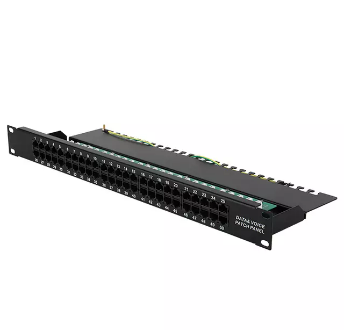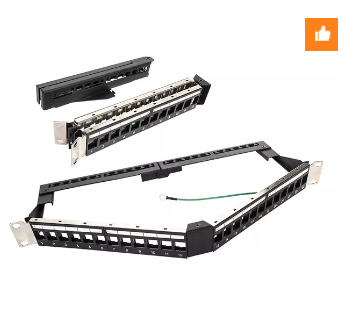
Patch panels are an essential component in network infrastructure, playing a crucial role in organizing and managing network connections. Curious minds often wonder, "What is a Patch Panel?" and "How does a Patch Panel work?" These questions are answered in this informative article that explores the inner workings of patch panels.
A patch panel acts as a centralized point where various cables from different locations are connected. It serves as a vital link between different devices, such as computers, servers, switches, and routers. This article delves into the details of patch panels, shedding light on their functionality and importance in network installations.
Understanding how a patch panel works is key to comprehending the intricacies of network connectivity. This article explains the step-by-step process, from cable termination to connection establishment. By gaining insights into the inner workings of patch panels, readers will be equipped with the knowledge to effectively troubleshoot and maintain network connections.
Whether you are a network administrator, IT professional, or simply someone interested in learning about network infrastructure, this article is a valuable resource. Delve into the world of patch panels and enhance your understanding of their significance in ensuring seamless network connectivity.
What is a Patch Panel?
A patch panel is an essential component in any network infrastructure. It acts as a central point for connecting and organizing various network cables. In simple terms, a patch panel allows for easier management and maintenance of network connections.
A patch panel is designed to house multiple ports, typically with RJ45 connectors, which are commonly used in Ethernet networks. These ports serve as connection points for network cables, such as twisted-pair cables. By connecting the cables to the patch panel, network administrators can easily route and reconfigure network connections as needed.
One of the key advantages of using a patch panel is its flexibility. It allows for easy changes and updates to the network layout without the need to physically access the network devices. Instead, network cables can be simply plugged or unplugged from the patch panel, making it a convenient solution for managing network connections.
Not only does a patch panel provide a neat and organized appearance to the network infrastructure, but it also helps in troubleshooting network issues. By having all the network connections centralized in one location, it becomes easier to identify and resolve any connectivity problems. This saves time and effort, especially in large-scale networks where tracking down a specific cable can be a daunting task.
When it comes to different types of patch panels, there are a few options available. For example, a network patch panel is designed specifically for Ethernet networks, whereas a voice patch panel is used for telephone systems. Additionally, an RJ45 patch panel is commonly used for Ethernet connections, as it supports the widely used RJ45 connector.

WebiT Patch Panel

WebiT Patch Panel Product
How Does a Patch Panel Work?
A patch panel is an essential component in any network infrastructure. It acts as a central hub that allows network cables to be interconnected and easily managed. But how does a patch panel work?
At its core, a patch panel works by providing a structured and organized way to connect network cables. It typically consists of multiple ports, each of which corresponds to a specific cable or connection. These ports are labeled and color-coded for easy identification and troubleshooting.
When setting up a network, cables from various devices such as computers, switches, and routers are terminated onto the back of the patch panel. These cables are then connected to the corresponding ports on the front side of the patch panel using patch cords. This configuration allows for easy management and flexibility in network connectivity.
One of the key advantages of using a patch panel is its ability to simplify network maintenance and troubleshooting. With all the cables neatly terminated onto the patch panel, it becomes much easier to identify and trace any connectivity issues. Instead of having to crawl under desks or search through a tangled mess of cables, network administrators can simply look at the patch panel and quickly identify which cable is causing the problem.
Another benefit of using a patch panel is its ability to facilitate changes and additions to the network. Since all the cables are terminated onto the patch panel, it becomes a simple matter of unplugging and re-plugging cables to make modifications. This makes it much easier to add new devices or reconfigure the network without disrupting the entire infrastructure.
Patch panels also provide a degree of flexibility in network design. Different types of patch panels are available, such as network patch panels, RJ45 patch panels, and voice patch panels, each serving specific purposes. Network patch panels, for example, are designed for data connections and often support higher bandwidths. RJ45 patch panels are specifically used for Ethernet connections, while voice patch panels are used for telephone systems.
Conclusion
A patch panel is an essential component in network management and organization. It simplifies the process of connecting and reconfiguring network cables and serves as a centralized location for troubleshooting network issues. Whether it's a network patch panel, an RJ45 patch panel, or a voice patch panel, these devices offer convenience and flexibility in complex network environments. They aid in cable management, troubleshooting, and allow for easy modifications and additions to the network. The use of patch panels ensures a more efficient and organized network setup. Therefore, it is important to remember the significance of a patch panel when setting up a network.

















